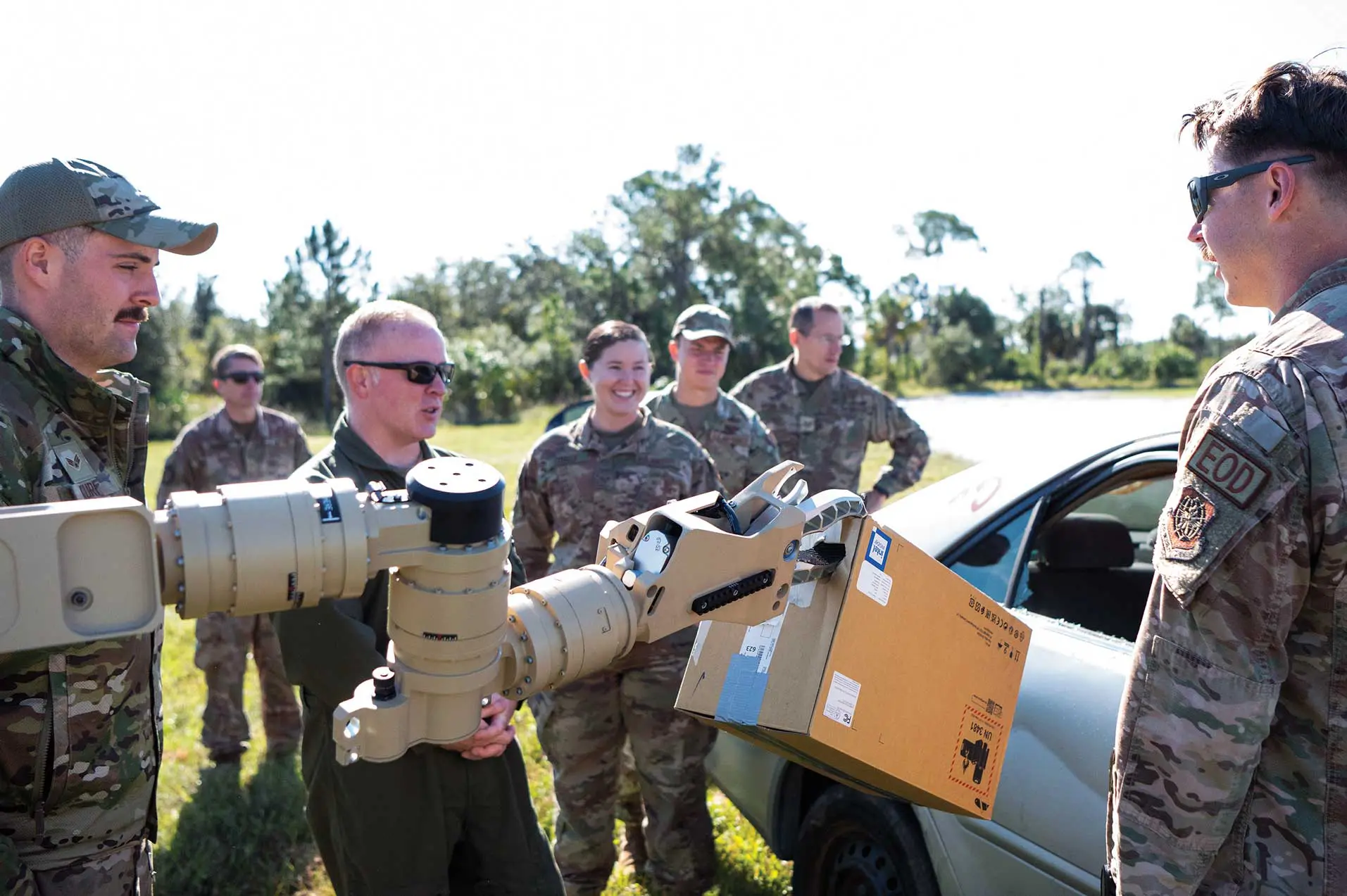Expanding the Weapons Safety Toolbox
By MR. RAY TRAYLOR, 19TH AIRLIFT WING WEAPONS SAFETY MANAGER
Weapons Safety Managers (WSM) do not physically lift wrenches any longer or build up munitions, or load them on airframes; however, they still need the right tools for the job. We need to expand our capabilities from time to time to meet the needs of future wars and missions. When new munitions arrive on station, the maintenance crew must add new tools to their toolboxes to perform maintenance on the new items. The potential to be placed in a bare-base environment with any mixture of the five branches of service is a possibility for a WSM, and familiarizing ourselves with the way other branches conduct business regarding their explosives safety programs will only make us a force multiplier. There are several different ways we can achieve that; one is through continued education.
The Army Safety Career Program 12 (CP-12) and Explosives Safety Professional Certificates, Levels 1 and 2, are options for us to expand our toolboxes. You can find out about the CP-12 program through the U.S. Army Combat Readiness Center website at https://safety.army.mil/CP-12/Certificate-Programs. The Air Force Safety Center (AFSEC) has an Air Force-equivalency matrix that identifies training you may have already taken that will count toward the CP-12 program at the following link: https://www.my.af.mil/gcss-af/USAF/ep/globalTab.do?channelPageId=s6925EC1335180FB5E044080020E329A9.
The Explosives Safety Professional Certificates, Levels 1 and 2, can be obtained only after completion of the CP-12 program and completion of the computer-based training located on the Department of the Army Defense Ammunition Center website, http://dactces.org/index.php. Explosives Safety Certificate Level 2 requires students to take both an Advanced Explosives Safety Management Programs (ESMP) Workshop and a Deviation Process Workshop, which can be taken without having the CP-12 certificate in hand; however, the Army does require that all the computer-based training be completed prior to attending the workshops. Workshops are instructed by the U.S. Army Technical Center for Explosives Safety, which is the equivalent to the AFSEC.
The ESMP Workshop, addressed in Department of Defense (DoD) Instruction 6055.16, establishes written guidance on the safety of ammunition and explosives (AE) during production, transportation, storage, handling, use, inspection, maintenance, munition response actions, demilitarization, and disposal. The Deviation Process Workshop addresses the use of a Department of the Army Form 7632, documenting deviations and risk acceptance involving AE or chemical agents.
One final suggestion to expand the toolbox would be the Defense Acquisition University Munitions and Explosives Safety Community Hub located at https://www.dau.edu/cop/ammo. You must register for an account and request access to the Hub. There is a lot of good information on this site, including items like a basic load ammunition holding area (BLAHA) inventory Calculator, BLAHA design, reduced quantity-distance storage, the “Yellow Book,†“Emergency Response Guide,†hazardous materials transportation, and much more. Although we are not required to complete continued education training each year, we cannot let complacency take hold in our profession. We must look for ways to increase our knowledge and capabilities to meet the U.S. Air Force’s needs, both now and in the future.

